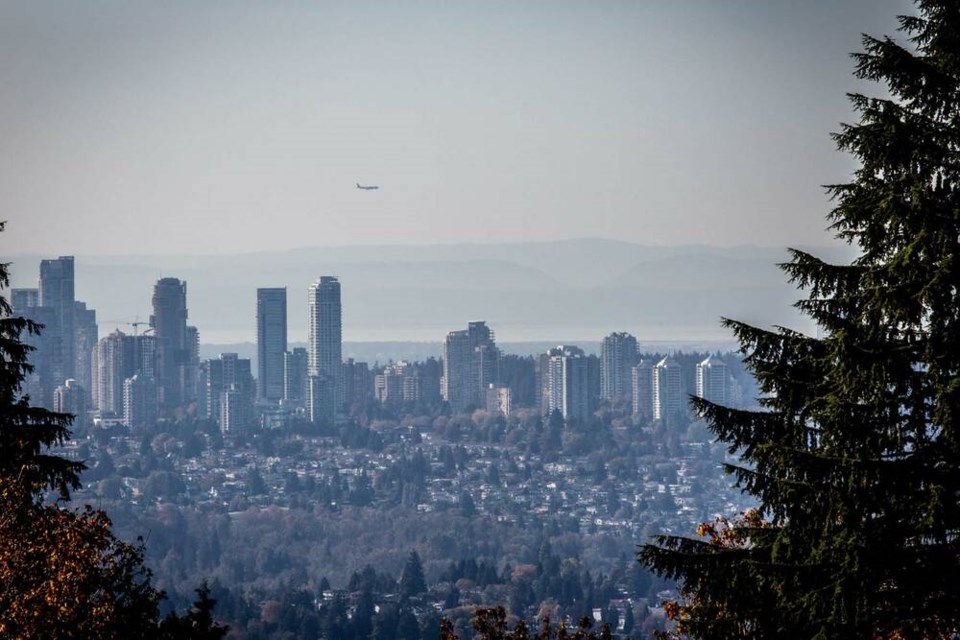Starting later this year, you can expect to see jets overhead in places you hadn’t before.
Public consultation is currently underway for proposed changes to flight paths, as new technology allows for more efficient approaches to Vancouver International Airport.
While the majority of paths will remain unchanged, and much of the new routing happens at very high elevations, Nav Canada – the non-profit corporation that owns and operates Canada’s civil air navigation system – is seeking public feedback at a series of information sessions.
The changes are part of the Vancouver airspace modernization project, which is designed to accommodate future demand for air services.
New procedures, called Required Navigation Performance with Authorization Required, allow aircraft to line up with the runway sooner than typical procedures today, according to Nav Canada. As a result, aircraft will fly a shorter distance and consume less fuel, the organization explained in a statement, and be able to descend on a quieter engine setting.
Nav Canada documentation shows that a new lane of air traffic above Burrard Inlet isn’t expected to impact residents much if at all, as planes would be too high to generate sounds above 50 decibels.
But certain parts of Burnaby, Surrey, Coquitlam and New Westminster might notice more skyward sounds as planes prepare to touch down in Richmond.
“We kept it over the water to the extent possible,” said Jonathan Bagg, a Nav Canada spokesperson who’s been overseeing some of the public consultation.
“And then when they start to turn in, that’s where you start seeing that 55 decibel range, and gradually increasing as the aircraft gets lower,” he continued, adding that some of the new path goes over industrial-use land while the final approach to the airport remains the same.
New paths minimize impact to residents, spokesperson says
When it comes to public feedback, the main point of interest from residents is overflight noise in their area, Bagg said.
Sometimes there aren’t opportunities to adjust routes, he said, based on safety and design criteria.
“In our existing proposal, we have made an effort with a number of our procedures to better avoid residential areas – we use noise modelling to assess that,” Bagg said. “Some of our procedures overfly as many as 60,000 fewer residents.” After the consultation is complete, a report will be made public on Nav Canada’s website.
At least half of inbound airport traffic will remain the same. Between 40 and 50 per cent of aircraft are equipped to fly RNP procedures, Bagg explained, and planes with the technology are granted use of it on a case-by-case basis, depending on the flight direction and air traffic at the time.
Bagg said Nav Canada is strongly encouraging residents to visit the agency’s website to learn about the changes, attend an in-person or virtual session, and submit their input.
“We really want to get input from the community on this,” he said. “A key focus for us is really ensuring that we can meet future demand for travel in a safe manner.”
Based on where consultation is at now, Bagg expects the changes to come into effect by the fall.
In the District of North Vancouver – which sees some YVR-bound traffic today, but at a high altitude – said it’s hard to comment on the impact of the changes until they come into effect.
“I’ve never received any emails about flight traffic,” he said.
Quite often, small craft fly overhead to Pitt Meadows Airport, “But they’re much smaller craft and they’re not really a problem,” Little added.
Upcoming consultations:
- Jan. 16: Tri-Cities
- Jan. 17: New Westminster, North Surrey, North Delta
- Jan. 18: Ladner, Tsawwassen, Delta
- Jan. 19: South Surrey, Whiterock
Find event details on the Nav Canada website.



